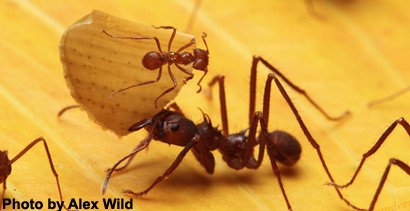Ants, often seen scurrying across our paths, are far more than just tiny insects. They possess an incredible strength that has fascinated scientists and engineers for years. But exactly how much can ants lift? The answer is truly astounding, revealing the remarkable biomechanics of these creatures.
The Neck Joint: An Engineering Marvel
Research published in the Journal of Biomechanics highlights the exceptional strength of an ant’s neck joint. According to Carlos Castro, assistant professor of mechanical and aerospace engineering at The Ohio State University, the neck joint of a common American field ant can withstand pressures up to 5,000 times the ant’s weight. “Ants are impressive mechanical systems—astounding, really,” Castro stated. This discovery has significant implications for robotics, potentially inspiring the design of future robots with similar weight-lifting capabilities.
Taking Ants Apart: A Scientific Approach
To understand the ant’s capabilities, Castro and his team took a unique approach: they examined the ant’s anatomy. “As you would in any engineering system, if you want to understand how something works, you take it apart,” Castro explained. This involved carefully dissecting and analyzing the Allegheny mound ant (Formica exsectoides), a common species in the eastern United States. The ants were first anesthetized to minimize any potential distress.
The Allegheny Mound Ant: An Average Lifter, Exceptional Strength
The researchers chose the Allegheny mound ant not for its exceptional lifting prowess, but for its availability and representativeness of common field ants. They employed various imaging techniques, including electron microscopy and micro-computed tomography (micro-CT), to examine the ant’s structure.
The Centrifuge Experiment: Pushing Ants to Their Limits
To measure the ant’s neck strength, the researchers used a centrifuge. The anesthetized ants were glued face-down inside the centrifuge, which was then spun at increasing speeds. This created a centrifugal force that pulled the ant’s body outwards, testing the limits of its neck joint.
The results were remarkable. At forces equivalent to 350 times their body weight, the ant’s neck joint began to stretch. Ultimately, the necks ruptured at forces ranging from 3,400 to 5,000 times their average body weight, demonstrating the ant’s incredible resilience.
Microscopic Structures: The Key to Strength?
Micro-CT scans and electron microscopy revealed intricate details of the ant’s neck structure. The joint features varying textures and structures, including bumps and hairs, which may play a role in stress distribution and mechanical function. These microscopic features could optimize the interaction between the soft tissue and hard exoskeleton, minimizing stress concentrations and enhancing performance.
Scaling Up: The Challenges of Human-Sized Ants
While ants are incredibly strong for their size, scaling up their design to human dimensions presents significant challenges. Ants owe their strength to their light weight. Their muscles primarily focus on lifting external objects rather than supporting their body weight. In contrast, humans carry comparatively heavy loads simply due to our body weight.
A human-sized ant would face the limitations of basic physics. Weight increases with volume (dimensions cubed), while muscle strength increases with surface area (dimensions squared). Therefore, a giant ant would likely struggle to carry extreme loads at a human scale.
Giant Robot Ants in Space?
Despite the challenges of scaling up, the ant’s design principles could still inspire the creation of large robots for specific applications. One possibility is deploying giant robot ants in microgravity environments, such as space, where they could carry and tow cargo with remarkable efficiency. These robots would incorporate a combination of soft and hard parts, mimicking the ant’s unique biomechanics.
Further Research: Unlocking the Secrets of Ant Strength
Researchers continue to investigate the ant’s muscles and movement patterns using techniques like magnetic resonance imaging. Computer simulations will also aid in understanding how to scale up similar structures. This ongoing research promises to unlock further secrets of ant strength and inspire innovative designs in robotics and engineering.
